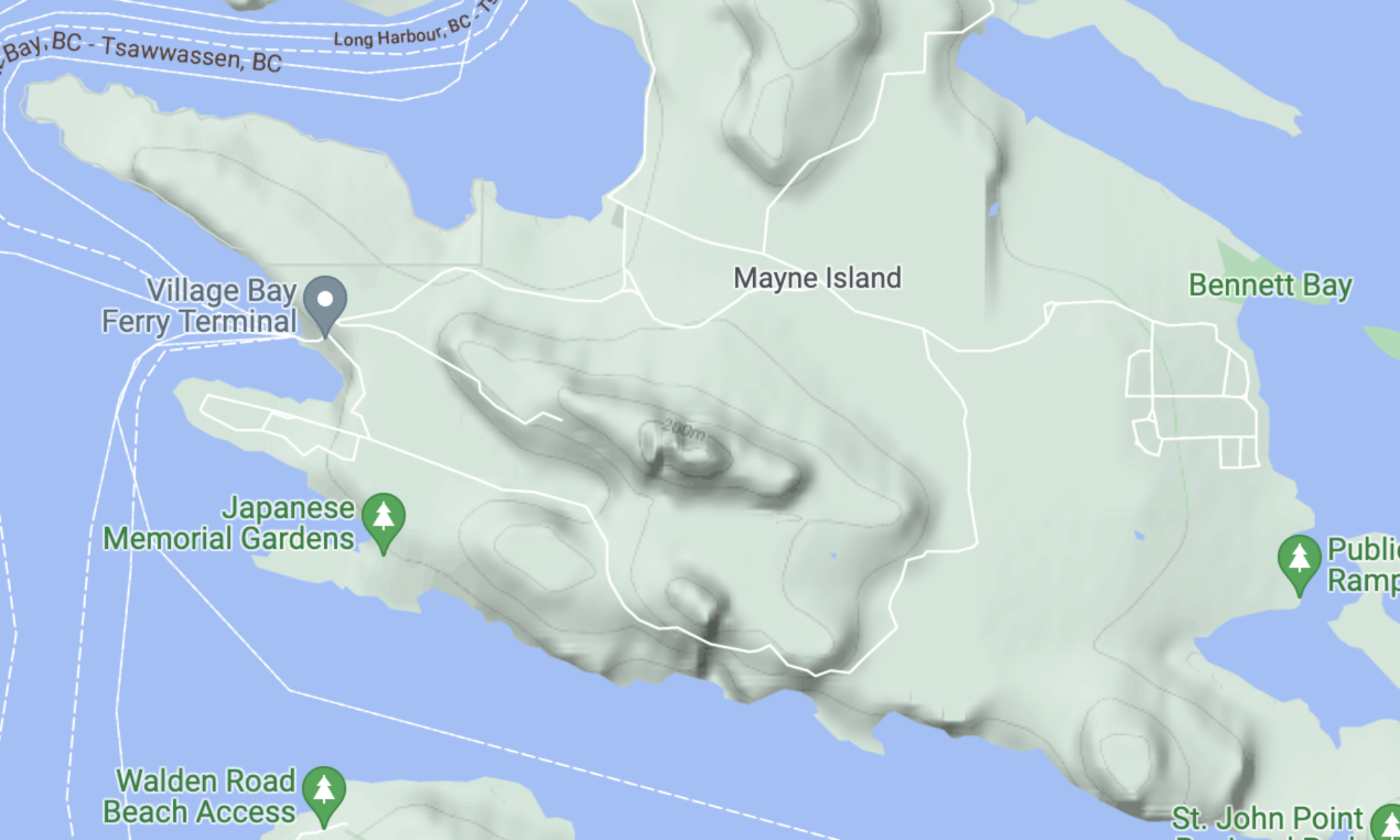Overview: Since being assigned to Route 5 (Southern Gulf Islands) in 1992, the Queen of Cumberland has struggled to effectively and efficiently serve the users. Issues with drives, elevated ramps, hull speed and conflicting berth schedules have clearly shown the Cumberland is unsuitable for the route and have earned the ship the nickname ‘Queen of Cumbersome’.
In summer months the Cumberland is switched with the Mayne Queen as it cannot keep the schedule due to high traffic – resulting in substantial overload situations as a smaller vessel is on the route.
Since being launched, the ‘Island Sky’ has repeatedly been identified as an ideal ship to replace the Cumberland. Currently deployed to Route 7, the Sky is one of the newest ships in the BCFS fleet. Having virtually identical vehicle capacity (125 vs. 127) and identical passenger capacity (462) the ships meet similar route requirements. The Sky has a higher hull speed, no elevated ramps and well suited to Route 5. BCFS have always maintained that the Sky is fully utilized on its present run and the Cumberland would be unsuitable as the ramps would seriously conflict with the scheduled sailings of Route 7.
Analysis: Recently released Route 7 figures (November 09 – September 2010) reveal that the Cumberland would be suitable for Route 7. The Cumberland has 85 vehicle spaces on the main deck, 127 total with the vehicle ramps deployed. For the purpose of this research, the sailings with 70+ vehicles were identified as a conservative assessment of the number of sailings on Route 7 that would require the deployment of the elevated vehicle ramps.
For the time period studied, there were approximately 5120 sailings on Route 7. The times the 70 vehicle threshold was exceeded was 378 sailings – or just over 7% of total sailings. At times there were weeks when the ramps would never have been deployed if the Cumberland was on Route 7.
It further is important to point out that over the time period studied the Island Sky never appeared to have an overload situation and only approximately 45 sailings carried more than 100 vehicles.When one considers that Route 7 is a point to point service, and potential delays due to ramp deployment would have minimal impact on the users or BCFS as a whole, it can be rationalized that the Cumberland would be well suited to this route.
It is important to highlight is the fact the Cumberland is unable to maintain its current Route 5 schedule with or without the deployment of the vehicle ramps. The Route 5 schedule is complex, involving 4 islands and interaction with two other vessels, delays tend to snowball over the day as the Cumberland falls further behind on each sailing. The situation is further exacerbated when the other ships that share schedules (Mayne Queen and Queen of Nanaimo) are delayed due to berth conflicts or waiting for traffic – resulting in excessive overtime charges to BCFS. At times the Cumberland is more than 60 minutes behind schedule on Route 5.
If needed the Route 7 schedule could be adjusted to accommodate the Cumberland with no impact on users or BCFS.
Conclusion: The Cumberland is well suited for Route 7. Ramp deployment on less than 10% of all sailings annually would not significantly impact schedules or users.
Assigning the Island Sky to Route 5 would result in vastly improved on time service, lessened overtime costs to BCFS and overall increases in customer satisfaction and utilization. Through the FAC, we are advised that over $750,000.00 in direct overtime costs are budgeted annually due to the Cumberland not being able to keep the schedule
Further consideration could be made to placing the Skeena Queen (100 vehicle capacity) on Route 7 instead of the Cumberland, and moving the Cumberland to Fulford Harbour (Route 4) to add capacity. Route 4 may be suitable for the Cumberland and the Skeena may match the actual loads seen on Route 7.
